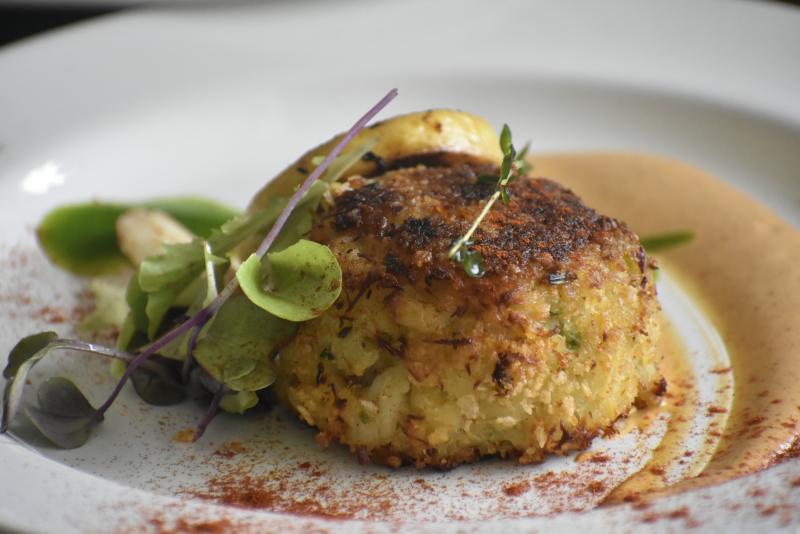Did you know horseshoe crabs are older than dinosaurs? Learn more about these unique creatures found along Assateague and the Delaware Bay. Salisbury Daily Times
“Sea spiders (are) as large as turtles,” the English explorer, Thomas Yong, later recalled, “have hard shells over themselves like turtles. They have many feet like crab feet, (they) have tails .. .like a tooth edged saw with which one can saw off the hardest wood.”
In 1631, the Dutch erected Zwaanendael, a small colony, on the banks of Lewes Creek; but when Yong sailed around Cape Henlopen three years later, the only traces of Zwaanendael were charred timbers overgrown with weeds.
A dispute with the Native Americans had led to the destruction of the Dutch settlement, and as Yong took note of the flora and fauna of southern Delaware, “The land is very good & fruitful, and withal very healthful. The soil is sandy and produces diverse sorts of fruits, especially grapes.”
Long before the dinosaurs vanished from the earth, Yong’s sea spiders, now known as horseshoe crabs, had developed into a near-perfect creature. Although styled a “crab,” it is related to scorpions, ticks, and land spiders.
The horseshoe crab’s hard shell enables it to roam the ocean floor safe from predators. As horseshoe crabs grow, they molt about once a year for the first 10 years of their lives. Most of the shells found on Delaware beaches are the discarded shells from molting crabs.
Occasionally, a young beachgoer turns over a shell of a live crab, and the discovery of the creature’s sprawling legs usually lead to loud shrieks and a hasty human retreat.
As a horseshoe crab moves along the bottom in search of food, it kicks up a cloud of debris that includes worms, mollusks, dead fish and other edible morsels. Since it has no teeth, the crab uses its legs to crush the food, which it adroitly passes into its mouth.
An overturned horseshoe crab may have difficulty turning over and may die in the summer heat, and it should be set back on its feet.
Horseshoe crabs live along the North American coast from Mexico to Canada, but the population is concentrated in the mid-Atlantic region, where the Delaware coast hosts the creature’s annual mating ritual during the spring when females deposit up to 20,000 eggs on the beach.
The eggs become food for the estimated one million birds that stop along the coast on their migratory journey from South America to Canada.
More: Medevac teams are at risk in Salisbury, Easton. How Shore cuts could have deadly outcome
More: Teen who changed Delaware medical marijuana law launches Virginia hemp farm
Before Thomas Yong and other Europeans arrived, Native Americans hunted the horseshoe crabs for food. They also used the shells as scoops, and they used the creature’s spiny tail as a tip for spears.
In the 19th century, it was discovered that pulverized horseshoe crabs made excellent fertilizer and pig feed. The mass spawning habits of the crabs made them easy to harvest; and during the first half of the 20th century, the population of horseshoe crabs was dramatically reduced.
Two decades ago, the number of horseshoe crabs had dropped to the point that some migrating birds had difficulty finding crab eggs. Since then the population of horseshoe crabs has improved.
A horseshoe crab’s white blood cells contain a lysate that can be used to detect and diagnose a form of spinal meningitis and to detect endotoxins, which are poisons produced by infectious bacteria.
The blood of horseshoe crabs can be used to test bacteria in drugs, including a potential coronavirus vaccine, to ensure that they are safe. After some of the blood from the crab is collected, the animal is released.
In 1634, when Thomas Yong visited the Delaware coast, he knew nothing about viruses, endotoxins and vaccines, but he would undoubtedly be surprised that the horseshoe crabs that he spotted near Cape Henlopen could help provide an answer to stopping a 21st century pandemic.
Principal sources:
Thomas Yong, “A Brief Relation of a Voyage,” Collections of the Massachusetts Historical Society, Boston, 1871, pp. 117-122,128-130.
Jane Scott, Between Ocean and Bay, A Natural History of Delmarva, Centreville, Maryland: Tidewater Publishers, 1991, p. 167.
Doug Fraser, “Horseshoe Crabs Could Be Key to COVI-19 Vaccine,” The Daily Times, July 12, 2020.
Read or Share this story: https://ift.tt/3hfZRVD
August 22, 2020 at 06:24PM
https://ift.tt/3hfZRVD
The little horseshoe crab, aka sea spiders, has an outsized role - Delmarva Now
https://ift.tt/2MkGRbk
Crab

No comments:
Post a Comment